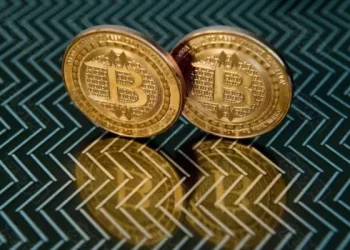Digital currencies have become a hot topic in recent years. They are changing the way we think about money and transactions. But it’s really hard to say exactly how many digital currencies there are. In this article, we’ll look at different kinds of digital currencies and try to figure out their numbers in a detailed way.
The Types of So Many Digital Currencies:
1. Bitcoin
Bitcoin is the very first digital currency. It was created in 2009 by someone using the name Satoshi Nakamoto. Bitcoin is decentralized. That means there’s no central bank or government in control of it. It uses blockchain technology. The blockchain is like a big book that records all the transactions. Miners work to verify these transactions by solving math problems and adding new blocks to the blockchain. There’s only one Bitcoin as a concept, but there are many units in circulation. The smallest part is called a satoshi.
2. Altcoins
Altcoins are all the digital currencies that are not Bitcoin. It introduced smart contracts. Smart contracts are agreements written in code that can execute themselves. Its native currency is Ether (ETH). Many decentralized applications are built on the Ethereum blockchain. For example, there are DeFi platforms and NFT marketplaces.
Ripple (XRP)
Ripple aims to make international money transfers between banks fast and cheap. It has its own way of validating transactions which is different from Bitcoin and Ethereum. It has partnerships with many banks around the world. But it also has some regulatory problems in certain areas.
Litecoin
Litecoin was made in 2011. People often call it the “silver” compared to Bitcoin’s “gold”.
It has a faster block generation time than Bitcoin. So transactions can be completed more quickly. It uses a different hashing algorithm and is meant to be better for everyday transactions.
Bitcoin Cash
Bitcoin Cash came from a hard fork of Bitcoin in 2017. The idea was to increase the block size limit. This way, more transactions could be processed in each block. Its supporters thought it would be more useful as a way to exchange money in daily life, solving some of Bitcoin’s scalability issues.
Many Other Altcoins
There are thousands of other altcoins out there. Some are made to focus on privacy. For example, Monero is a digital currency that tries to hide the details of transactions and the identities of the people involved. Others are made for specific industries or communities. They might be used to buy things in a certain online marketplace or for a particular group of users to trade with each other.
3. Stablecoins
Stablecoins are designed to have a stable value.
Tether (USDT)
Tether is one of the most commonly used stablecoins. It says it’s backed by US dollars held in banks. People often use it when they move money between different cryptocurrency exchanges. It helps them avoid the big price changes of other cryptocurrencies like Bitcoin. But there have been questions about how transparent its reserves really are.
USD Coin (USDC)
USDC is issued by Circle and Coinbase. It’s fully backed by US dollars and has regular audits to make sure the tokens are properly supported. Many cryptocurrency platforms use it for trading and payments because people trust it more due to the audits.
DAI
DAI is a decentralized stablecoin on the Ethereum blockchain. It keeps its value stable through a system of collateralized debt positions and smart contracts. Users can put up other cryptocurrencies like Ether as collateral to get DAI. Each DAI is supposed to be worth one US dollar.
Other Stablecoins
There are many other stablecoins in the market too. Some are pegged to other fiat currencies like the euro or the Japanese yen. Others might be tied to a basket of different assets to maintain their stability.
4. Central Bank Digital Currencies (CBDCs)
Many central banks are looking into or developing their own digital currencies.
The Digital Yuan (e-CNY)
China is leading in the development of CBDCs with the Digital Yuan. It’s being tested in many cities in China for things like paying in stores, taking public transport and more. The goal is to make the payment system more efficient while still having the stability and control that a central bank’s currency offers.
The Sand Dollar (Bahamas)
The Bahamas was one of the first countries to fully launch a CBDC. The Sand Dollar is meant to help people who don’t have easy access to traditional banking services. It can be used for everyday transactions and works with the country’s existing financial system.
Other CBDCs in Development
Many other countries like the United States, the European Union and Japan are working on their own CBDCs. Each country has its own reasons for developing them. Some want to make their payment systems better. Others want to have more control over their monetary policy or make the financial system more stable.
5. Security Tokens
Security tokens are a type of digital currency too. They represent ownership of an underlying asset. This could be shares in a company, real estate or a bond. They have to follow securities regulations in many places. For example, a company could issue security tokens instead of regular shares. Then people could buy and sell these tokens on a blockchain-based platform. It would make trading and transferring ownership easier.
6. Utility Tokens
Utility tokens are made for a different purpose. They give people access to a specific product or service within a blockchain-based system. For example, in a gaming platform, there might be utility tokens. You can use these tokens to buy things in the game like special weapons or to unlock new levels. They’re not really meant to be investments like some other digital currencies. They’re just for using in that particular application or network.
New Ones Are Always Coming:
Every day, new digital currencies are being created. People with some technical skills and ideas can try to make their own coins or tokens. Some of these new ones might have good ideas behind them, like trying to solve a problem that existing digital currencies haven’t fixed yet. But others might just be made to try and make money quickly without a real useful purpose.
Some Disappear:
At the same time, a lot of digital currencies don’t last long. They might not get enough people using them. Maybe the team that made them stops working on it. Or they run into regulatory issues and have to stop operating. For example, in the early days of the cryptocurrency boom, there were many tokens that were just hyped up for a short time and then disappeared when people realized they weren’t worth much.
No Central List:
There’s no one place where all digital currencies are listed. Unlike stocks that are registered with official exchanges and regulators, digital currencies don’t have that kind of central record. Some are only traded on small, unknown exchanges. Others might only be used within a small group of people or a specific project and never get known widely.
Different Definitions:
What counts as a digital currency can be different depending on who you ask. Some people might only think of Bitcoin and the big altcoins as digital currencies. Others would include stablecoins, CBDCs and all kinds of tokens too. So depending on how you define it, the number could be a few thousand or many more.
The Impact of So Many Digital Currencies:
1.Innovation
With so many different digital currencies, there’s a lot of innovation happening. Developers are always trying to make blockchain better. They’re looking for ways to make transactions faster, cheaper and more secure. For example, different projects are working on improving how blockchains can handle a lot of transactions at once. This is important because some blockchains like Ethereum can get really slow and expensive when there are too many transactions.
2.Financial Inclusion
Stablecoins and CBDCs can help more people get access to financial services. In places where there aren’t many banks or it’s hard to get traditional banking services, stablecoins can be a way for people to save money and make transactions. CBDCs can bring people who don’t have bank accounts into the formal financial system. They can use the digital version of the country’s currency just like they would use cash.
3.Regulatory Challenges
Having so many digital currencies makes it really hard for regulators. They have to make sure that people are protected from things like fraud and money laundering. They also need to make sure that the financial system stays stable while still allowing innovation to happen. Different digital currencies need different rules, and it’s a big job for regulators to keep up with all the changes.
Conclusion:
In conclusion, we can’t give a simple answer to how many digital currencies there are. The world of digital currencies is always changing. New ones come, old ones go. And depending on how we define them, the number can vary a lot. But all these different digital currencies, from the well-known ones like Bitcoin to the newer CBDCs and tokens, are changing the way we think about money and finance. It’s important for everyone involved, like developers, investors and regulators, to understand this changing landscape so we can make the most of the good things and deal with the problems that come with it.
Related topics:
Is Digital Money and Digital Currency the Same?

















